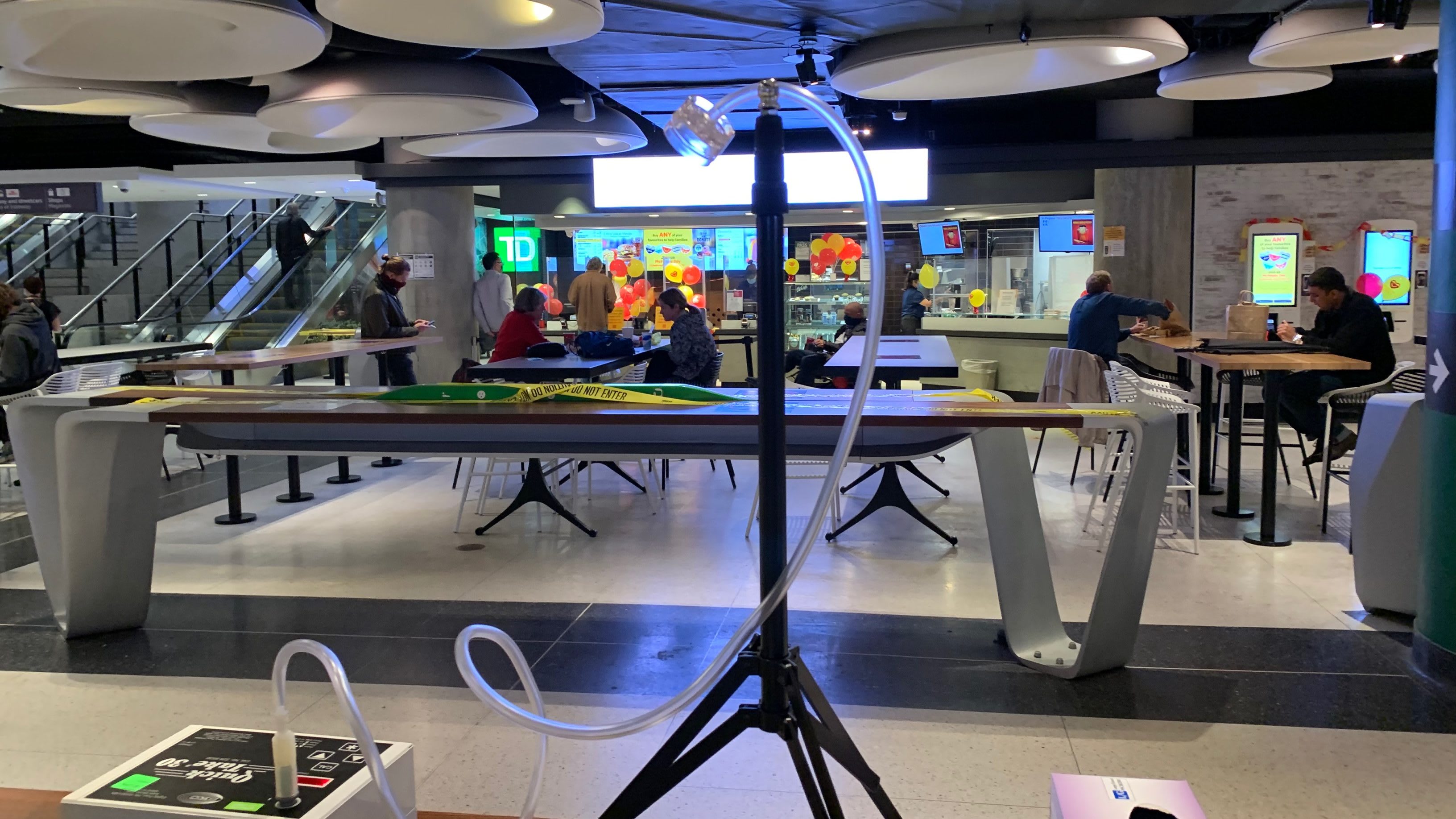Metrolinx study finds no virus on tested surfaces & air samples
Metrolinx News provides an update on COVID-19 environmental sampling study.
Oct 6, 2021
It’s an ‘all clear’ from Metrolinx experts conducting a pilot project looking for the virus on transit touch-points and in the air at some of the busiest train and bus locations in the country.
Late last month (Sept. 22 and 23), members of Metrolinx’s Industrial Hygiene team went to Union Station, Union Station Bus Terminal, and on-board a bus to collect a total of 36 discrete samples, looking for SARS-COV-2.
SARS-CoV-2 is simply the virus that causes COVID-19 and is a member of a much larger family of viruses called ‘coronaviruses’.
All the touch-points on vehicles and inside stations came back negative for the virus. (Metrolinx photo)
In all, 17 air and 19 surface swab samples were collected in high traffic or high-touch surfaces areas.
Results from the laboratory analysis indicated that no genetic material of the virus was detected in any of the samples.
The environmental sampling pilot provides assurance to customers and staff that the virus was not present and that control measures are working. This includes efforts from front-line staff who clean high touch surfaces regularly, as well as passengers, visitors and staff who continue to wear their masks, stay home when ill, physically distance, and sanitize their hands.
Here’s a look at the sophisticated air testing equipment. (Metrolinx photo)
Here’s a bit more on how the environmental pilot study was conducted:
- Planning the Scope:
- Air sampling: Locations for sampling were selected based on where high traffic of customers could be expected in the York and Bay concourses, including the York Concourse food court. Air samples were collected at the breathing zone height – that means at head level – where over 1000 L of air gets pulled through the filter over the course of approximately one hour.
- Surface sampling: Locations where swabs were collected were based on known high-touch surfaces such as Ticket Vending Machine (TVM) screens and pin-pads, door handles/push bars, elevator buttons, and escalator handrails.
- Collecting Samples:
- Air sampling was done by using a calibrated high-flow air sampling pump. This is an instrument that draws in air from the environment which goes through a filter to trap any potentially infectious aerosols. What’s collected on the filter is analyzed by an accredited laboratory.
- Surface sampling was done by using a sterile swab and swabbing a surface area of approximately 25 cm2. The swab was then placed into a vial containing a liquid solution to preserve any potential viral material on the swab.
- All sampling performed was done by trained Hygiene Officers wearing masks and nitrile gloves to minimize the risk of contaminating a sample.
- Sample Processing & Transport:
- All samples collected were given a unique identifying sample ID number. All samples were carefully placed in a cooler with ice packs between 2°C and 8°C for transport, then placed in a dedicated sample refrigerator until shipped to an accredited laboratory for analysis.
- A form called the chain of custody was filled out which lists all the samples being sent, their sample ID, the date, and the medium sampled (air or surface). This form is important since it documents the movement of these samples and anyone who may have handled the samples.
- Laboratory Analysis:
- Once the laboratory received our samples, the samples were processed through Quantitative Reverse Transcription PCR analysis (qRT-PCR). This type of analysis looks for the presence of SARS-CoV-2 genetic material and is reported as positive or negative detection.
The pilot will help Metrolinx study the impact of the preventative measures throughout its network.
In the next few months, Metrolinx will be repeating the same testing at various stations and operational facilities, as well as on trains and buses for continued assurance.
Environmental sampling for the SARS-CoV-2 virus is just one more item on a list of more than 40 measures Metrolinx has instituted since the start of the COVID-19 pandemic.
by Archana Kunasegaram Metrolinx Hygiene Officer
